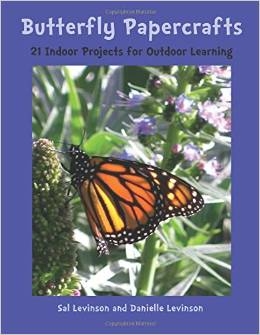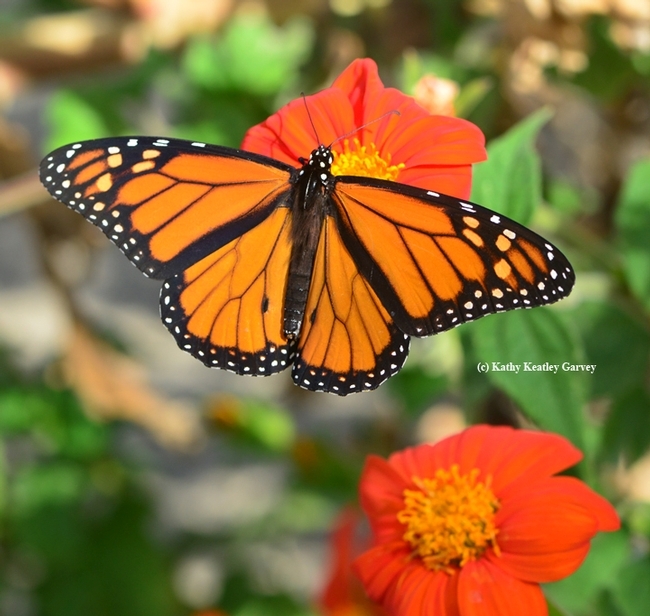
So writes Sal (Sally) Levinson in her newly published book, Butterfly Papercrafts, which contains 21 indoor projects for outdoor learning.
Ah, the joys of discovery! If you're looking for something educational, rewarding, timely and artsy-crafty for your kids--and your neighbors' kids--how about teaching them about butterflies?
And just in time for National Pollinator Week, June 15-21.
Sal who studied entomology at the graduate level at UC Riverside and UC Berkeley, wants to inspire youngsters to learn about our amazing world of butterflies through art and a little science. Each of the 21 papercrafts contains a lesson about butterflies.
Butterfly Papercrafts is intended for youngsters ages 5-12, but really, it's also a beginner's book for all ages and a teacher's treasure. And it's priced under $10 ($9.99).
Readers can learn about the life cycle, from egg to caterpillar to chrysalis to adult; and craft a butterfly paper airplane, a caterpillar flip book and a monarch finger puppet. In addition, there's also fascinating information about nectar, pollination, monarch migration, and "puddle parties" (who wouldn't want a puddle party?). She'll tell you exactly what a puddle party is and describe the behavior.

Sal has worked with insects from the fields of central California, to the forests of Connecticut and Idaho, to the labs of Berkeley. A butterfly educator for the past two decades, she maintains her own butterfly garden and provides specimens for adult and children's classes, teacher training sessions, and garden fairs. She also writes a blog.
Sal and her brother, Bill Levinson, completed two films, In the Company of Wild Butterflies, and The Secret Lives of Monarchs.
Sal lives in Berkeley with her husband and, of course, “my insects.” Her daughter, Berkeley resident Danielle Levinson, who illustrated the book, holds a degree in design from UC Davis. Now a software engineer for Google, Danielle remembers growing up with caterpillar terrariums on the kitchen table.
And the monarch finger puppet? It's a puppet that appears to have four legs. Sal explains that all insects have six legs, but the monarch, "like all brush-footed butterflies, has two legs that are tiny."
"Once the finger puppet is complete, you can use it to mimic butterfly behavior," Sal writes. "For instance, you can take it on a long flight, pretending that it is migrating to Mexico or the coast of California for the winter. Your puppet can bask in the sun to warm up, look for a mate, nectar at flowers, and lay eggs on leaves. At night, it can roost in a protected place. What other butterfly behaviors can your puppet mimic?
And the monarch migration chapter? Readers can color trees, the monarchs, and the background. The end result: pop-up art.
"Monarchs migrate south in the fall and spend the winter in trees along the California coast and in Mexico," Sal writes. "In the spring, they fly north and reproduce." For further reading, she recommends the book, Monarchs by Kathryn Lasky and the film, On the Wings of the Monarch.
Caution: Those delving into this papercraft book will (1) become more curious about insects (2) spend a humongous quantity of time outdoors looking for them (3) plant a butterfly garden and (4) rear butterflies.
Or become a lepitopterist or artist. Or both.
Attached Images:

